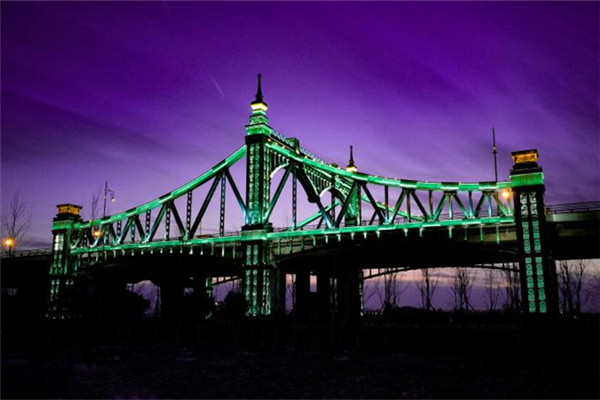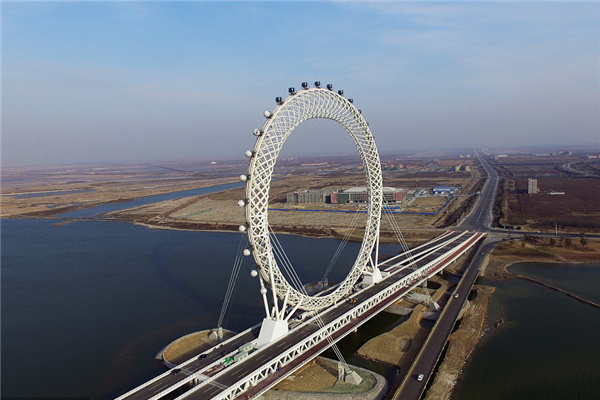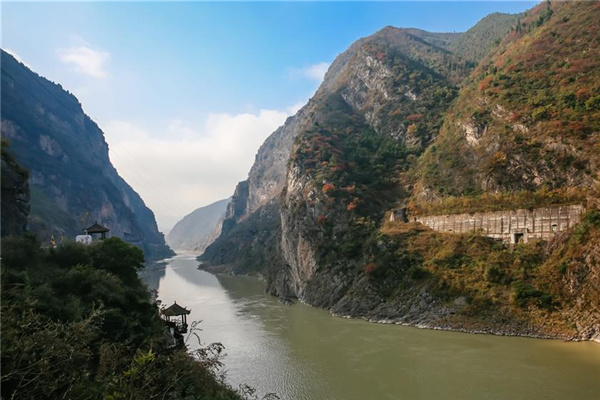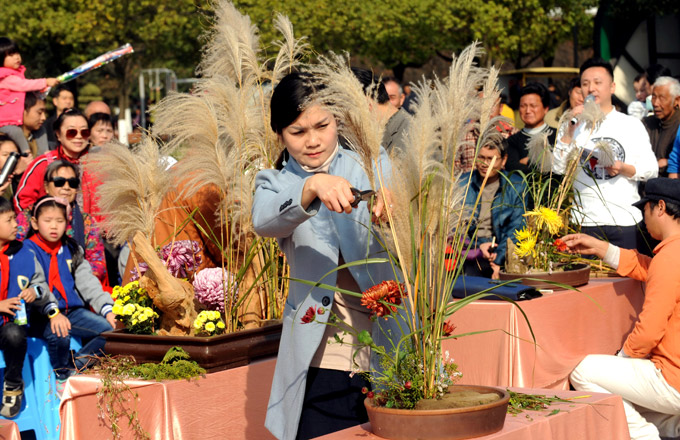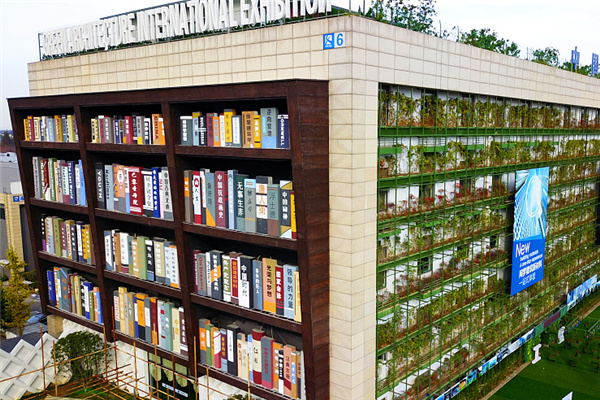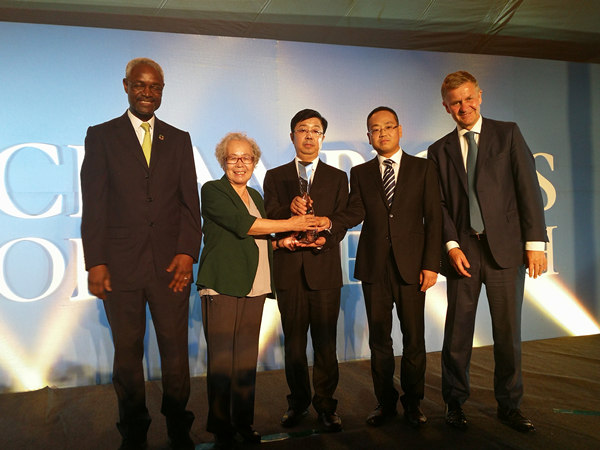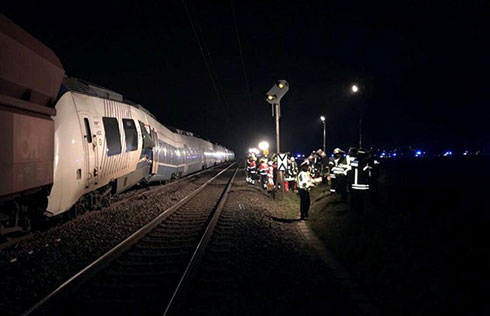

|
A clock tower in Hanwang, a town in Sichuan province, is frozen at 2:28 pm, the moment the earthquake badly hit the area on May 12. Hanwang will build an earthquake memorial site, which is part of the cooperation plan between Greensburg, Kansas and Mianzhu. |
It took two May disasters to bring a small obscure farming town in the United States together with Mianzhu, one of the worst hit cities in the Sichuan province earthquake.
On May 4, 2007 Greensburg, Kansas, population about 1,500, was virtually wiped out by a tornado that killed 11 people and destroyed 95 percent of the town.
Mianzhu, population about 500,000, was also nearly destroyed in the May 12, 2008 earthquake that killed 11,117 people in the city, with 251 missing. It suffered a loss of 142.3 billion yuan, accounting for one sixth of the total loss in Sichuan and is ranked among the top three badly hit areas in the province.
In early December, Mianzhu's city government signed a cooperation memorandum with its counterparts from Greensburg, according to a report from the 21st Century Business Herald.
The two groups came together through the efforts of an executive director with the US Treasury Department, Dan Wright, who contacted Greensburg's city government about a possible "economic partnership" with Mianzhu, largely because of the two towns sharing a common experience.
"Wright came out in early October and met with me and (Greensburg Mayor Bob Dixon) to see if we were willing to strike a partnership with one of the communities in China hit by the earthquake last May," Greensburg City Administrator Steve Hewitt told the Kiowa County (Kansas) Signal newspaper.
"(Wright) explained we could help them with understanding how we're rebuilding in a sustainable way and that we could learn from their recovery efforts as well, and that we'd be going as part of the (United States) government's formal signing of the Strategic Economic Dialogue that's been in the works between the two governments the last five years."
In its rebuilding efforts, Greensburg is becoming an "eco-city" making sure that all new construction is energy-efficient "We've educated our citizens on how to be able to build a home without wasting natural resources," Dixon told AFP.
"We are also building a community wind farm of ten turbines that will generate electricity for our whole community, and the days when we generate excess we'll be able to sell that back to the grid."
The efforts caught the eye of Wright, who had also spent two years in China prior to his work with the US Treasury Department.
"China 's 30 years of opening up policy tells us an important experience that the biggest breakthrough is usually from local areas," says Wright. "It's the same for the US. The 10-year Sino-US energy plan will be a remarkable event in establishing green partnership and actively seeking local innovation and cooperation."
The cooperation aims to rebuild Mianzhu in an eco-friendly way, including constructing green buildings, sewage, trash, gas and industrial waste disposal systems, soil erosion control, restoration of vegetation and biomass energy development.
A dialogue mechanism and a joint organization will soon be set up to further develop the partnership between the two towns.
It is part of the agreement signed by Chinese Vice-Premier Wang Qishan and US Treasury Secretary Henry Paulson at the fifth round of the Strategic Economic Dialogue (SED) in December.
But before the papers were signed, Greensburg was unfamiliar to most US citizens as well as all Mianzhu residents. And Mianzhu was equally unknown to the residents of Greensburg.
Greensburg is now known in Kansas not only for its horrific tornado damage but also for its bold move to rebuild as a "sustainable model of eco-living in the US and in the world".
Greensburg will be the first eco-living community authorized by the US Green Building Council, which means the town will be rebuilt according to the highest US environmental standards.
The town will encourage families to use recyclable materials, water-saving toilets, bio-detergents and solar heating systems.
Now, wind power plants have become a new signal of the town. The netlike rainwater collecting systems irrigate the vegetables since the annual rainfall in the town is only about 550 mm. The new Town Hall, which is under construction, will harness solar energy, collect and harvest rainwater for reuse on site, and maximize interior day lighting. The construction materials include reclaimed brick cladding on floors and walls and reclaimed wood. This project is expected to achieve a LEED Platinum Certification.
Discovery Communications chronicled the catastrophe and rebuilding of Greensburg in a 13-part series, "Eco-Town", which left a deep impression on the officials in Mianzhu.
"They have very strict requirements for their environmental techniques," says Luo Dengliang, vice-mayor of Mianzhu after watching the documentary. "Their courage, foresight and leadership are quite impressive."
Now, Mianzhu is mulling nine professional plans for reconstruction and getting help from universities, the China Academy of Urban Planning & Design and some American companies.
The general reconstruction plans, which emphasize safety, environmental protection and ecological restoration, are in the assessment phase and will be submitted to the State Council later.
Luo was very surprised when informed of the environmental partnership with Greensburg.
"It never occurred to me that a small town in the US had experienced a fatal disaster one year ago and it is experiencing the eco-friendly reconstruction now, just like us. The partnership with Greensburg may be helpful," he says.
However, it isn't easy for Mianzhu to copy the Greensburg model.
"Greensburg has less than 2,000 residents, while the population in Mianzhu is about 500,000. Our burden is much bigger," says Luo.
Trip to Mianzhu
The team from Greensburg included City Administrator Steve Hewitt and Mayor Dixon, Kiowa County Chamber President Steve Kirk and a school superintendent Darin Headrick.
When arriving at Mianzhu and seeing the debris on the way, they are shocked by the earthquake damage, which reminded them of their own tragedy only a year earlier.
"The damage was unbelievable," says Hewitt. "It's a tragedy that we have lost 11 people in the tornado in 2007. Yet, 4,000 of total 60,000 local residents have died in Hanwang, including 500 children."
During their one-week in Mianzhu, the foreigners were also inspired by the busy reconstruction.
"I remember seeing some older folks with shovels and wheelbarrows moving dirt on a hospital construction project," says Hewitt. "I said, 'Where's the Bobcats to do this?' I was told it was important to give people things to do to keep them working, no matter their age. You saw people setting up shop wherever they could to scratch out a living, like running a pharmacy out of a tent."
The "Chinese speed" also impressed them a lot. "People in Sichuan province are rebuilding their hometowns at a splendid speed and we can't catch up at the same pace," says Hewitt.
"In the US, we need to take time to discuss plans in public meetings and negotiate with the federal government. While in China, the reconstruction plans are determined by the central government within a few months," Hewitt adds.
After visiting a temporary community that is located with about 30,000 residents, US Federal Emergency Management Administration Director Richard Hainje, who was also with the Greensburg group, says, "China's emergency management is very successful."
Local people's passion and hope for life also inspired the foreigners.
"In the rooms without heating systems or running water people were actively planning how to rebuild their permanent buildings," says Hainje. "I remember one gentleman was set up in a little makeshift shop outside his quarters with a shoe repair business. You saw that over and over."
Dixon said he was impressed by the way residents recycled building materials.
"I found people recycling the tiles from the debris to build new houses and designing quake-resistant buildings."
Hand in hand, heart with heart
The officials from Greensburg were also a little surprised to see that some people in Mianzhu could speak English. After a week in Mianzhu, the Americans also learned simple Chinese such as ni hao (hello).
"I can understand what they are talking about since we share many similar things," says Hewitt. "With more experts and technical advantages, we can help the reconstruction works in Sichuan and are pleased to offer more solutions and development concepts."
Though they speak different languages, people in Greensburg and Mianzhu seem using another language to communicate.
"It is the similar catastrophe that links people in two faraway places together. It's quite marvelous," says Wright.
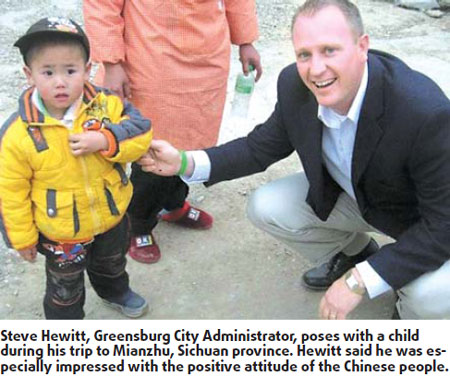
(China Daily 12/29/2008 page10)
